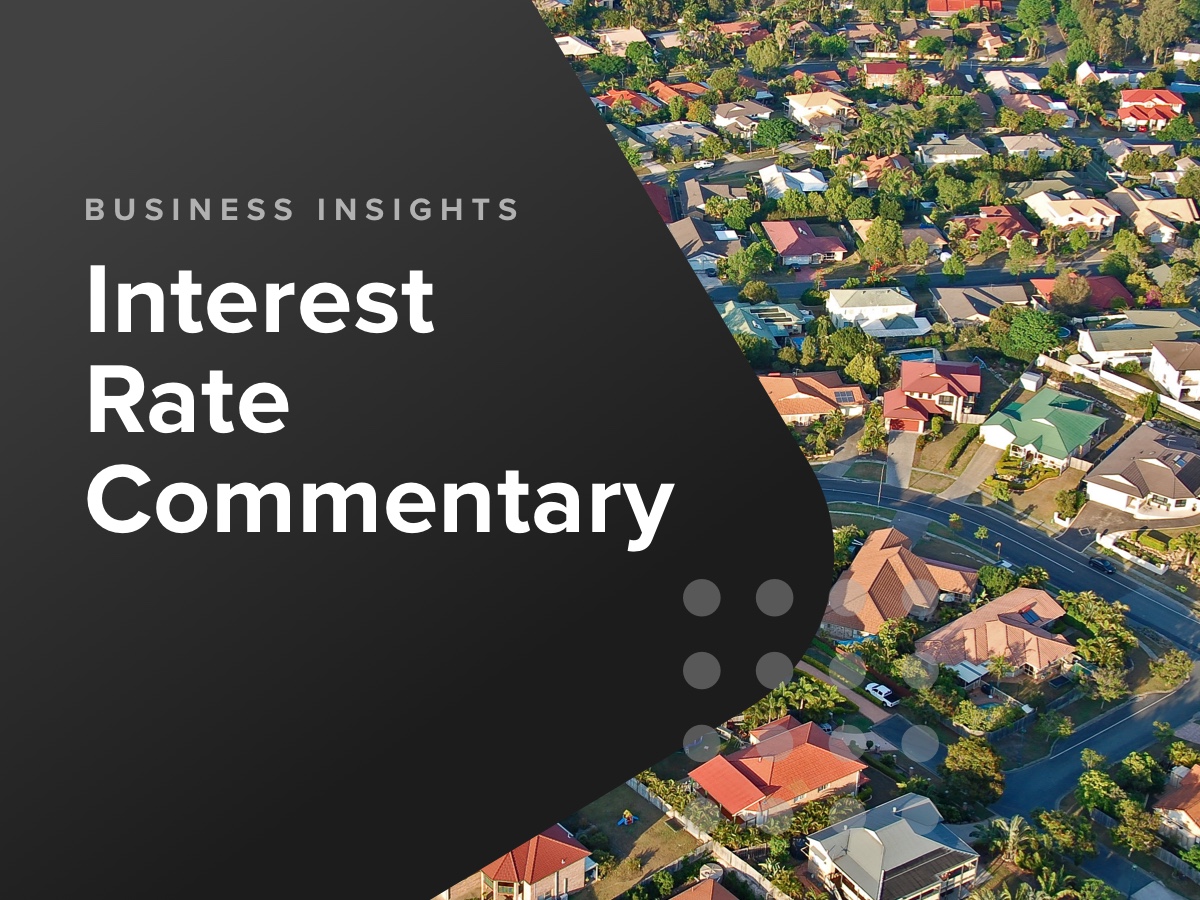Helping Australian small businesses choose the best loan products for them
In Part 1 of this two-part blog series, Phil Druce, COO of CreditorWatch customer Lend Capital, helps SMEs make sense of the finance options available to them during COVID-19 and beyond.
Businesses across Australia have been hit hard by the events of the past few months, and business owners will also have felt limited in available finance options during a risky time for business loan lenders.
In this two-part series by Phil Druce, COO of Lend Capital, we’ll look at the state of business lending in Australia and how the events of 2020 have impacted available loan products. We’ll also cover government grants and alternate ways to access funding, and discuss what to look out for when comparing business loans.
In Part One, we’ll look at the extended asset write-off, government grants, and some of the available options for secured and unsecured cashflow finance.
What are you eligible for?
In response to business struggles experienced during the pandemic, the Australian Government announced a plan to increase the Instant Asset Write-off Threshold from $30,000 to $150,000:
- This is now available to businesses with an aggregated annual turnover of less than $500 million – previously this limit was $50 million.
- The increased write-off amount has been extended, on the condition that the asset is purchased before 31 December 2020 and installed by 30 June 2021.
If you’re purchasing – or planning to purchase – assets for your business, you could claim an immediate deduction for assets less than $150,000. Here’s how it works:
- Your business will need to be eligible for the plan
- Write-offs for passenger vehicles are capped at $57,581
- New and second-hand assets can both be claimed, provided each asset costs less than $150,000
- If your asset is for business and private use, you can only claim the business portion – e.g. using a business vehicle.
If your business is eligible for the increased write-off amount, this can be an excellent opportunity to purchase assets and potentially off-set the depreciation immediately.
Separate to the above write-off scheme, SMEs with an aggregated turnover of less than $10 million can deduct the balance of their simplified depreciation pool – in full – at the end of the 2020/2021 financial year. Learn more about this here.
Government grants
Before the global pandemic, there were more than 300 available grants and initiatives on offer to businesses in various industries. For example:
- Export Market Development Grant (EMDG) – a 50 per cent reimbursement (up to $150,000) on costs relating to businesses promoting their products and services overseas.
- Accelerating Commercialisation (AC) Grant – up to $1,000,000 in matched funding to enable commercial products to enter new markets.
- The Enterprise Solution Centre – up to $100,000 to support businesses working in the agribusiness sector.
There are a number of COVID-19 assistance packages available on a federal and state level. You can find a full list of currently available federal and state government grants here.
An overview of business loans during COVID-19
Most lenders will be hesitant to approve loans for businesses during a particularly risky period in their industry, and business owners should carefully consider whether taking out a business loan is a responsible and financially beneficial option:
- Consider who you are choosing as a lender
- Assess whether their process fits the needs of your business and timeframe for finance
- Accurately assess your ability to repay the borrowed amount
- Speak to a financial adviser about whether taking a loan is suitable for your circumstances
For example, banks may offer lower interest rates, but require a drawn-out application and approval process. Inversely, online lenders may charge higher interest rates, but often provide same-day, or next-day, approval.
You could choose a long-term loan (a lot like a mortgage) and you’ll enjoy lower interest rates, but the total interest will be considerable over time. If you add administration fees, transaction fees or any number of potential penalties to your payments, this can lead to a ballooning loan amount.
The key is to match the type and term of your loan to your business needs:
- You can fund a major, long-term purchase such as new premises with a long-term loan secured on the property.
- Consider using specific product loans for different types of assets. For example, equipment or vehicles purchases could be funded with finance tied to the expected lifespan of the asset. Learn more about business car financing options.
- Additional cash flow, or minor purchases like extra inventory, could be covered with short-term finance options like an unsecured business loan, overdraft, or line of credit.
You could also turn to alternative options such as invoice finance if you need to close the gap between the cost of sales and receipt of payment from customers.
Business cash flow finance options
Each type of business loan available in Australia is unique in how it works, and understanding how these business loans work – and what they are most suitable for – will help you decide which one may be the best finance option for your business.
Below, we’ve summarised each type of business loan currently available to SMEs. It’s important to understand the tax implications or benefits of each particular loan type before accepting funding from a lender.
1. Unsecured business loans
An unsecured business loan is an all-purpose short-term loan, usually between 3 – 12 months. It can be used for almost any business purpose, and is offered by a large number of specialist finance providers with a wide range of terms. The three main advantages of an unsecured business loan are:
- Speed of approval
- Flexibility in approval criteria
- They do not require security – i.e. collateral.
In contrast to the stricter criteria and slow approval process when applying through banks, most online business loan lenders will process an unsecured business loan application within hours by using finance technology to assess and approve your application.
As there is no collateral used on an unsecured business loan, they present a higher level of risk to a lender. This is often reflected by higher interest rates and fees. If you’re considering an unsecured business loan, you’ll want to weigh up the importance of fast access to cash versus the higher interest rates that come with them.
Due to the speed, flexibility and accessibility of unsecured business finance, they have quickly become the most popular form of business finance Australia has on offer.
Pros | Cons |
|
|
2. Secured business loans
A business will need to be trading for at least 6 months and have a minimum monthly revenue to apply for a small business loan.
If you do decide to apply for a secured loan, you’ll need assets – either business or personal – to use as collateral. You’ll also may need to provide a number of supporting documents, so be prepared with full financial statements and details of your assets.
Small business loans can be accessed through banks or online small business lenders, with the approved amount relative to the revenue of the business. You’ll get a lower interest rate from the bank (if you can get approved) but faster approval through a non-bank lender.
Pros | Cons |
|
|
3. Line of credit
Similar to a small business loan, you can use a line of credit for any business purpose, and usually has a term of 3 – 12 months.
You’ll have an agreed credit limit and be able to access funds up to that amount – but interest will only be charged on the amount you draw. Interest will usually be calculated daily, like on a business credit card, and charged at the end of each month.
A business line of credit can be structured in two ways:
- A single-use facility allows you to draw down in instalments and repay in regular instalments much like a normal loan.
- A revolving facility allows you to draw down, repay, and reuse the funds as often as you like within the term of the facility.
Once the facility is approved, you don’t need to get approval from the lender to draw down funds. However, the main downside is that you have to pay for your line of credit (initial or ongoing fees) regardless of whether you access the cash or not.
Pros | Cons |
|
|
4. Business overdraft
A lender will make an amount of credit available to your business, which you can access when you have insufficient funds in your account to make a purchase or withdraw funding.
- A business overdraft will be linked to your business banking account.
- Once you withdraw funds using your overdraft, you will be required to repay the withdrawn amount – and any interest accrued – through scheduled payments.
- Depending on how your business operates and its annual turnover, you may be given the option to choose between weekly or monthly repayments.
A business overdraft can be unsecured, or secured by using property as collateral. Of the two options, a secured business overdraft will have lower interest rates.
Pros | Cons |
|
|
5. Startup business loan
Startup business loans are often used by small businesses with a short operating history, and self-employed individuals, and are small, low doc business loans. Generally, they are designed for borrowers who cannot provide the necessary documentation for standard business loan approval.
Startup loans can be approved and funded on the same day through an online lender just by providing your bank statements and business details.
Due to the speed and access to funding that business owners generally need, business owners are increasingly working with online business loan lenders.
Pros | Cons |
|
|
Overview
| Type of Finance | Summary |
| Unsecured Business Loan | A term loan that does not require security |
| Secured Business Loan | A term loan which uses existing security |
| Line of Credit | Access to a pre-agreed credit limit |
| Business Overdraft | Access to a pre-agreed overdraft limit |
| Startup Business Loans | Short-term finance designed for new businesses |
Summary
Choosing a business loan may be more difficult during the pandemic, but it’s not impossible. There are a number of options available, and comparing small business loans offers by matching available loans with your business needs will help guide your decision:
- Avoid covering long-term needs with short-term financing. It’s extremely risky (what happens if your short-term loan expires and the lender doesn’t want to renew?) and will end up costing you big in the long run.
- Avoid covering short-term needs with long-term financing. You may be attracted to low rates, but this could lock you into a finance deal that will tie up your finances for years.
- If you’re looking to solve cash flow issues, you’re going to want a flexible loan, like a credit card or line of credit. You may end up paying higher rates, but you won’t borrow more than you’ll need, and that can save you money over time.
You have a lot of options for business financing. Each one comes with its own set of terms, which means individual pros and cons.
In Part Two of our series, we’ll look at other options for securing business finance, and how to compare the finer details of your loan agreement.
 Phil Druce
Phil Druce
Phil Druce, Chief Operating Officer (COO) of Lend Capital heads up technology and operations of the company.
He brings 20 years of experience in leadership of technology businesses. Since 2016, Phil has focused on producing technology-driven products and services and delivering exceptional client services for Lend.



